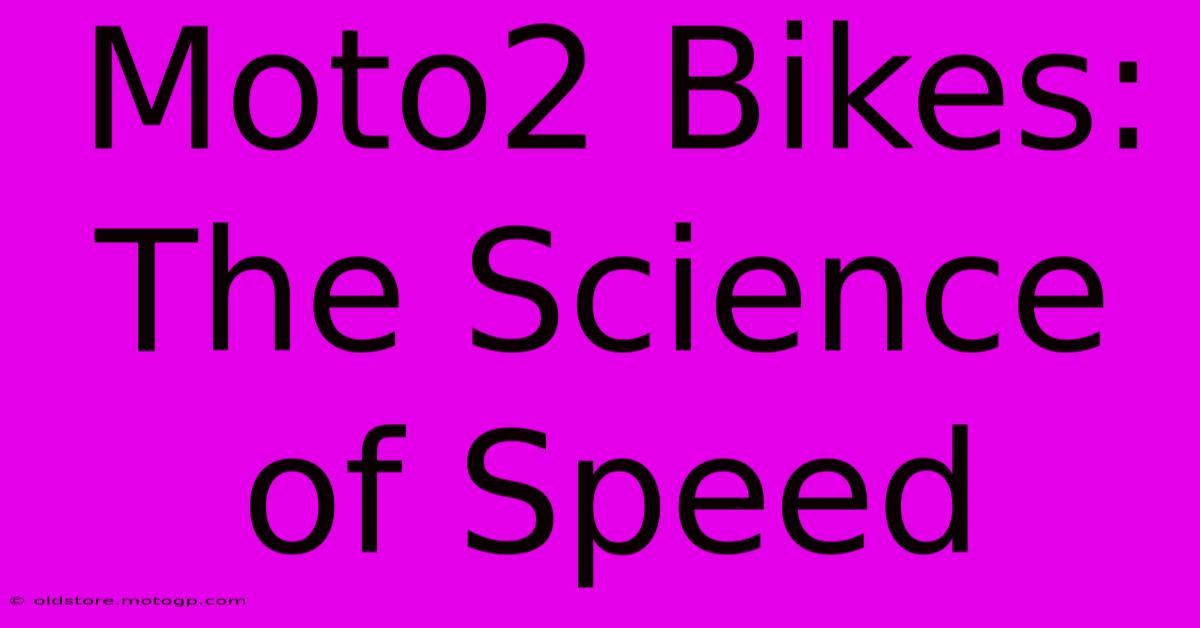Moto2 Bikes: The Science Of Speed

Table of Contents
Moto2 Bikes: The Science of Speed
Moto2 racing represents a fascinating blend of cutting-edge technology and raw human skill. These bikes, with their standardized engines, showcase the intricate science behind achieving maximum speed and performance. Understanding the nuances of their design and engineering reveals a captivating story of innovation and optimization.
The Standardized Engine: A Level Playing Field
Unlike MotoGP, where engine manufacturers compete fiercely, Moto2 utilizes a standardized Triumph 765cc triple-cylinder engine. This standardization ensures a level playing field, emphasizing chassis development, rider skill, and aerodynamic efficiency as key differentiators. This focus on other aspects of bike performance pushes the boundaries of engineering in different directions.
Engine Tuning and Optimization:
While the engine itself is standardized, teams meticulously tune and optimize various parameters to extract maximum performance. This includes:
- ECU Mapping: Adjusting the engine's electronic control unit (ECU) mapping allows fine-tuning of fuel injection, ignition timing, and other critical parameters to suit specific track characteristics and weather conditions.
- Exhaust Systems: Custom exhaust systems are crucial. They significantly impact engine power delivery, reducing back pressure and optimizing gas flow for increased efficiency.
- Air Intake Systems: Efficient air intake is critical for engine performance. Teams meticulously design and optimize airboxes and intake ducts to maximize airflow while minimizing drag.
Chassis Dynamics: The Art of Handling
The chassis of a Moto2 bike is a masterpiece of engineering. It's a complex interplay of geometry and materials designed for optimal handling and stability at high speeds.
Frame Design and Materials:
Moto2 bikes typically use lightweight yet incredibly strong frame materials like aluminum or carbon fiber. The frame's geometry (head angle, rake, trail) is meticulously designed to balance stability at high speeds with agile handling in corners.
Suspension Systems:
Advanced suspension systems, often employing sophisticated electronics, are crucial for maintaining traction and stability. They absorb bumps and provide optimal tire contact for superior grip.
- Fork and Shock Absorbers: Highly adjustable front forks and rear shock absorbers allow precise tuning to suit different track conditions and rider preferences.
- Electronic Suspension Systems: Some teams utilize electronic suspension systems, dynamically adjusting settings based on real-time data.
Aerodynamics: Cutting Through the Air
Aerodynamics play a crucial role in Moto2 racing. Reducing drag and maximizing downforce are essential for achieving higher top speeds and improved stability.
Fairings and Bodywork:
Highly refined fairings and bodywork are meticulously designed in wind tunnels to minimize drag and generate downforce. Even small changes in shape can significantly impact performance.
Aerodynamic Wings:
Similar to Formula 1 cars, Moto2 bikes often incorporate aerodynamic wings or winglets. These create downforce, improving stability at high speeds and allowing for increased cornering speeds.
Tires and Electronics: The Grip and the Brains
The tires and electronics systems are essential components in the pursuit of speed.
Tire Technology:
Moto2 utilizes high-performance racing slick tires developed by specialized manufacturers. Tire choice and pressure are crucial factors impacting grip and performance.
Electronic Rider Aids:
Sophisticated electronic rider aids play a critical role in enhancing performance and safety. These systems, controlled by the ECU, include:
- Traction Control: Prevents wheelspin, maximizing acceleration and stability.
- Anti-Wheelie Control: Limits front wheel lift, improving acceleration and control.
- Engine Braking Control: Smooths engine braking, making the bike more predictable and easier to control.
The Human Element: Rider Skill and Strategy
While the technology is impressive, the human element remains paramount in Moto2 racing. A skilled rider can extract the maximum potential from the bike, making crucial decisions about racing lines, braking points, and overtaking maneuvers.
Conclusion: A Continuous Pursuit of Perfection
Moto2 racing is a constant evolution of technology and technique. The standardization of the engine pushes teams to push the boundaries of chassis development, aerodynamic refinement, and rider skill. Every detail, from engine tuning to aerodynamic optimization, contributes to the ultimate goal: achieving the science of speed. The pursuit of perfection in Moto2 is an ongoing process, ensuring that the competition remains fierce and exciting.

Thank you for visiting our website wich cover about Moto2 Bikes: The Science Of Speed. We hope the information provided has been useful to you. Feel free to contact us if you have any questions or need further assistance. See you next time and dont miss to bookmark.
Featured Posts
-
Mastering The Wind Moto Gp Aero Dynamics
Feb 21, 2025
-
Motorcycle Grand Prix Winners Pushing The Limits Of Performance
Feb 21, 2025
-
Cota Qualifying Setting The Pace
Feb 21, 2025
-
The Price Of Glory The Sacrifices Of The Best Moto Gp Riders
Feb 21, 2025
-
Elevate Your Racing Motorcycles Ready To Ride
Feb 21, 2025
